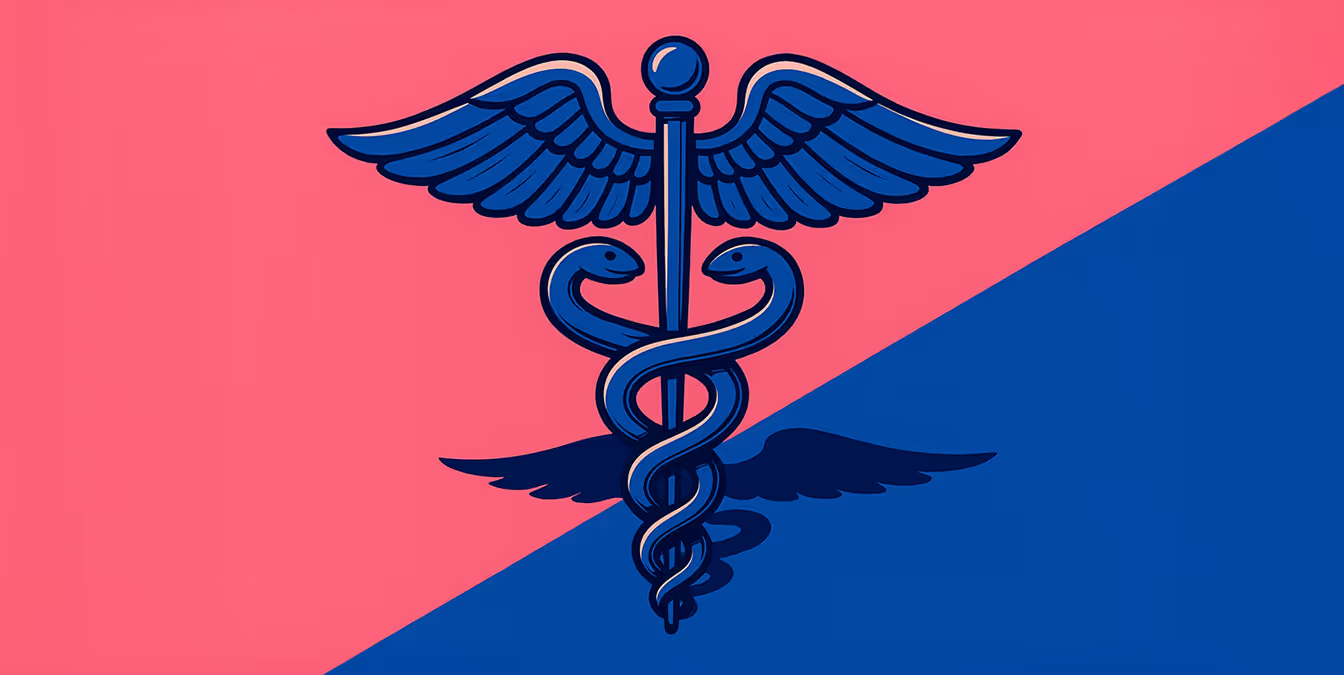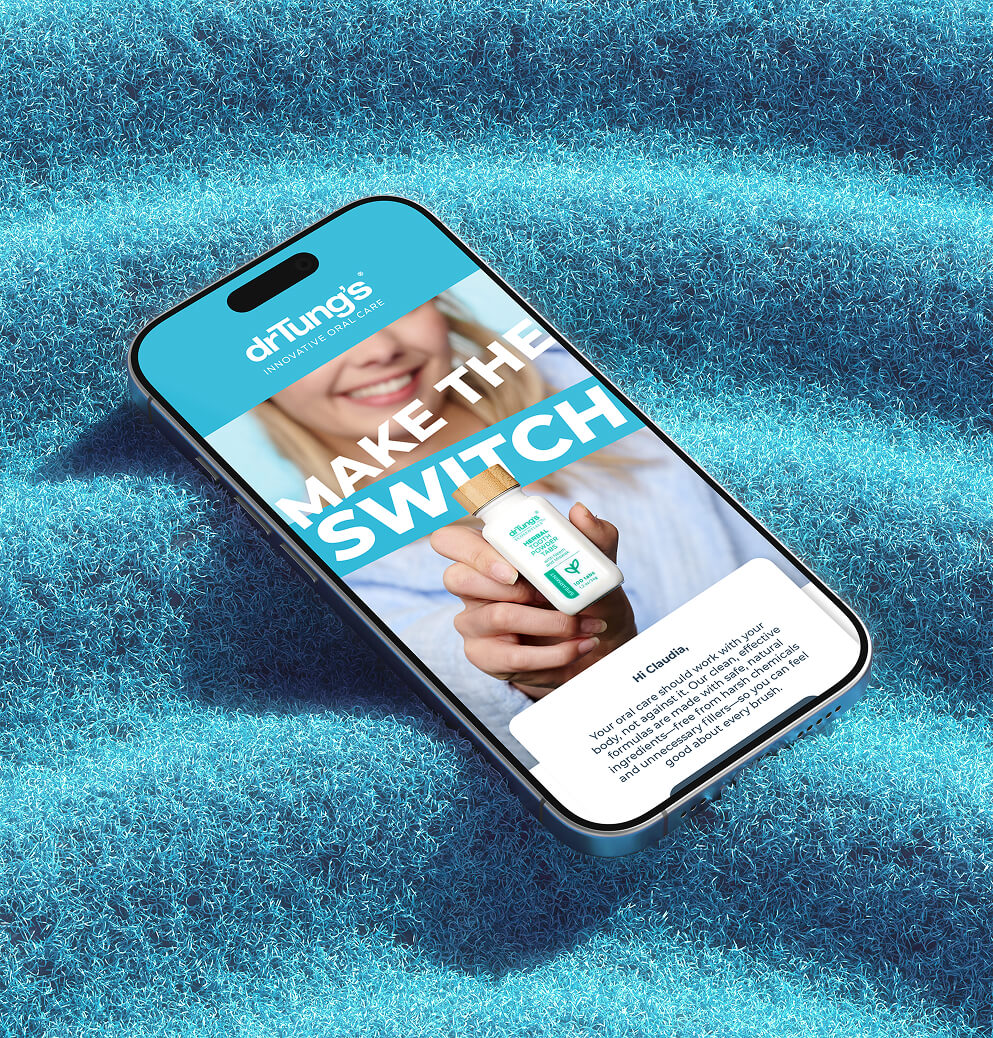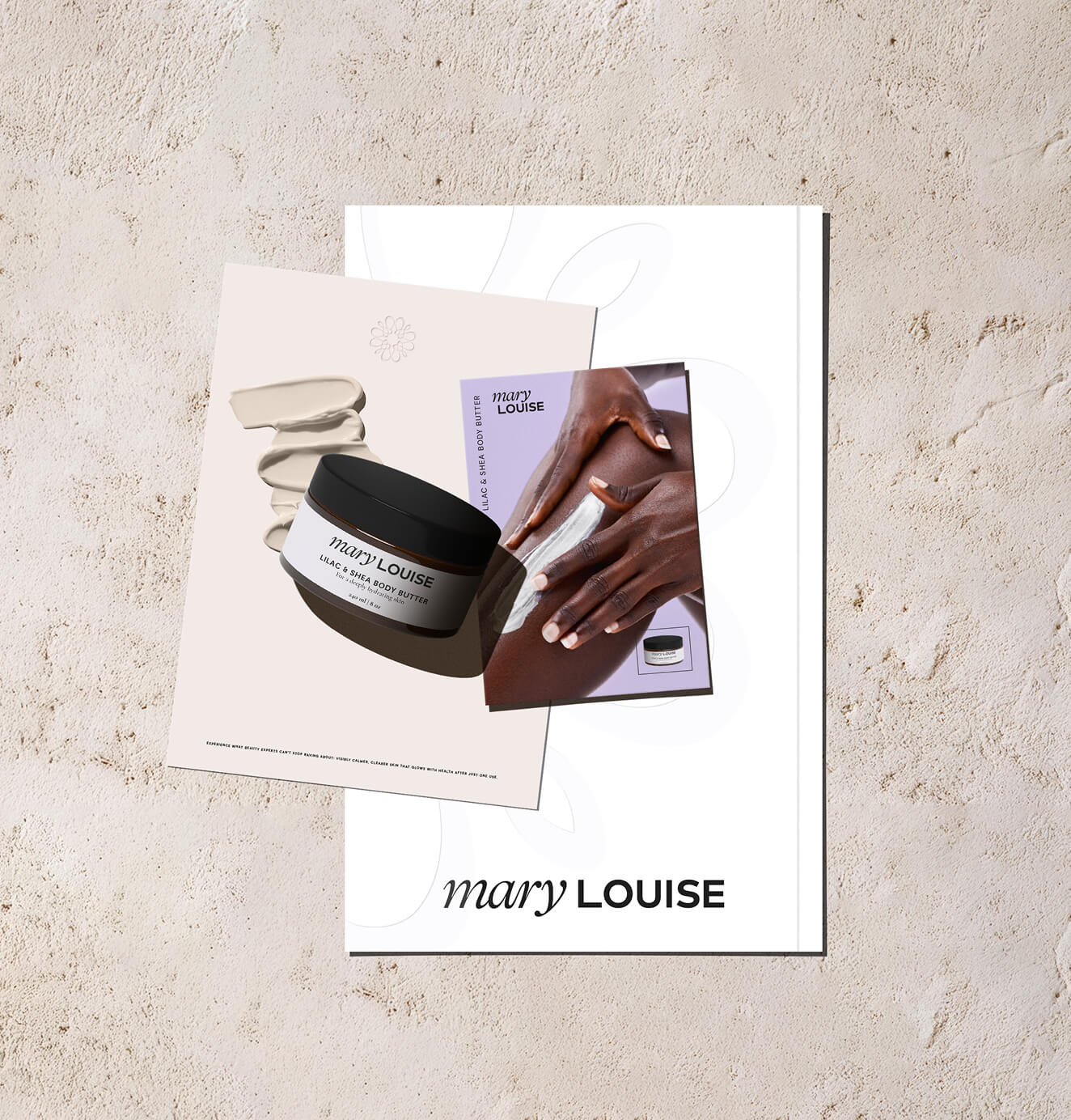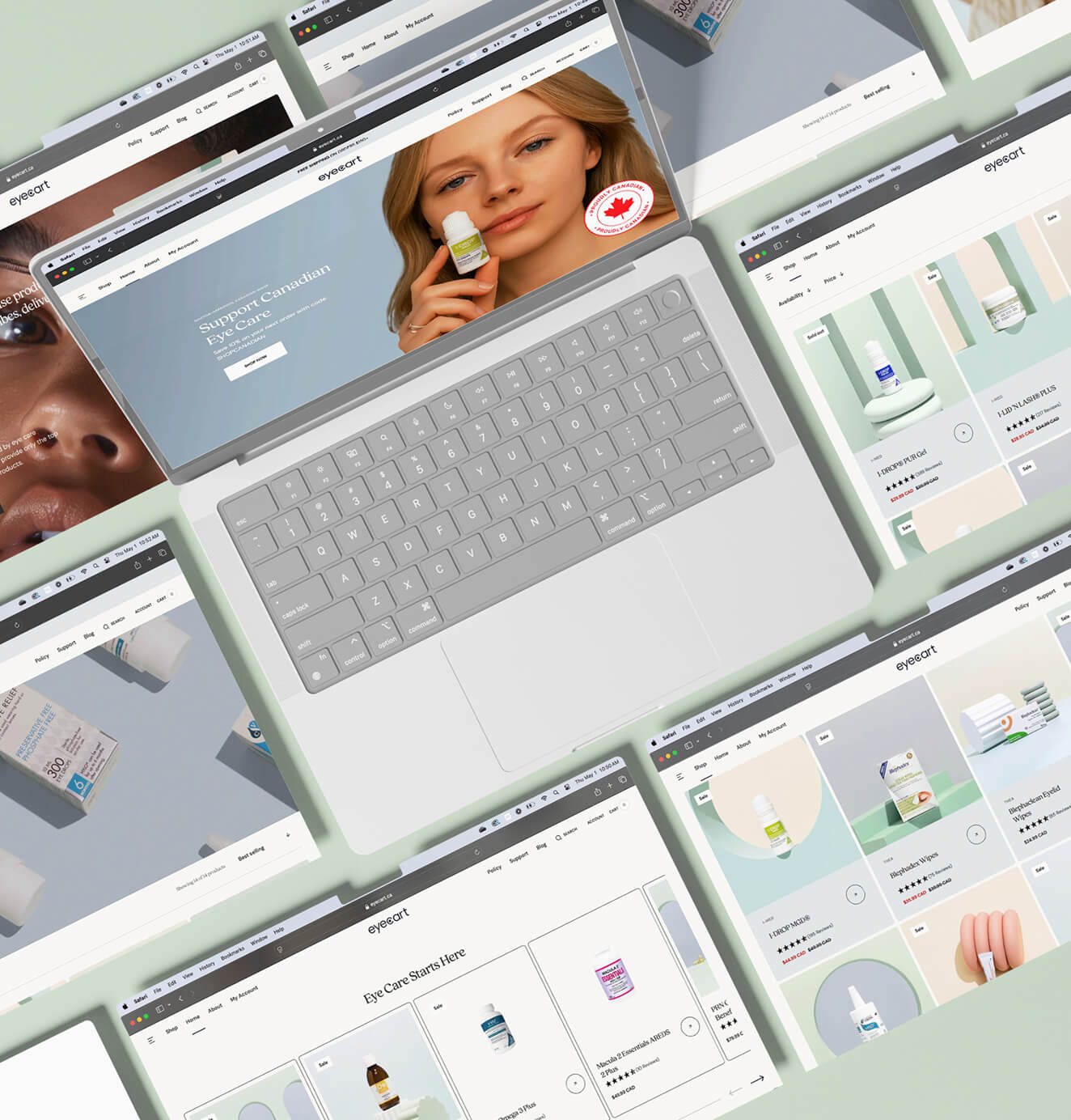A Comprehensive Guide to Branding and Marketing for Healthcare
03/06/2025
Marketing Strategy
In today’s competitive healthcare landscape, branding and marketing are essential to build trust, communicate value, and grow your patient base.

Attention all healthcare businesses! Want to rise above the competition and make your mark in this highly competitive industry? With over 487,000 small and medium-sized healthcare service businesses operating in the US, it's time to up your branding and marketing game. Our comprehensive guide has got you covered, from the fundamentals of branding to creating a unique identity that resonates with your customers. We'll show you how to develop a killer brand strategy, refine your mission statement and values, craft a catchy tagline, and even create customer personas. But we won't stop there. We'll also delve into creating effective marketing campaigns that get results. We'll cover everything from setting measurable objectives and defining target audiences to crafting content for various channels (hello, social media!) and leveraging SEO tactics. So why settle for mediocrity when you can achieve greatness? Let's elevate your healthcare business to new heights with our proven branding and marketing strategies. You don't want to miss this! Take a look at our captivating case study detailing the "Weight Loss for Kids" initiative we undertook for the esteemed Dr. Natasha Agbai.
.png)


What are the Different Types of Healthcare Businesses?



Before diving into branding and marketing for healthcare businesses, it’s important to understand the different types of businesses that operate within the sector. Generally speaking, there are three main types of healthcare organizations:
1. Hospitals – large medical centers that provide inpatient care and perform medical procedures.
2. Physician Practices – group or individual practices that offer outpatient care and may include specialists, general practitioners, physician assistants and nurse practitioners.
3. Home Health Care – organizations that provide a range of medical services to patients in their home, such as nursing care, physical therapy, and assistance with daily living activities.
What is the Future of the Healthcare Industry?
The healthcare industry is constantly evolving as new technologies and treatments are developed. In order to keep up, it’s important for organizations to stay up-to-date on the latest trends and predict what the future of healthcare will look like.
Some of the major changes that have already been seen in the sector include increased consumer demand for convenience, a greater focus on preventative care, the rise of telemedicine and remote monitoring solutions, and the growing use of artificial intelligence in patient care.
By staying ahead of the curve with marketing initiatives and keeping their branding up-to-date, healthcare organizations can ensure they remain successful as the industry continues to evolve.
Branding for Healthcare
What are the Benefits of Healthcare Branding?
Branding is essential for any business, and healthcare organizations are no exception. A strong brand identity will not only make the organization stand out from its competitors but also build trust with customers, increase customer loyalty, and attract new patients or clients.
Here are some of the key benefits of branding for healthcare businesses:
1. Establishes Trust – By presenting a strong and consistent brand identity, healthcare organizations can demonstrate their commitment to providing quality services and build trust with customers.
2. Improves Recognizability – A cohesive branding strategy will help ensure that patients recognize your organization’s logo and name no matter where they see it, whether it’s on social media, television commercials or billboards.
3. Strengthens Professionalism – A professional brand identity will create a positive perception of your organization and help to reinforce the idea that it is a reliable and trustworthy provider of medical services.
4. Increases Brand Loyalty – By creating an emotional connection with customers, a strong brand identity can help to foster customer loyalty and encourage patients to return for future care.
Medical Branding VS Healthcare Branding
When it comes to branding for healthcare organizations, there is a subtle distinction between medical and healthcare branding. Medical branding focuses on the clinical aspects of the business and tends to be more sterile in nature. Healthcare branding, on the other hand, encompasses a broader range of topics such as customer experience, patient satisfaction, trustworthiness and community engagement.
It is important to recognize this distinction when creating your brand identity and marketing strategies.
Developing a Brand Strategy for Healthcare Organizations
Before you start creating logos or taglines, you will need to determine what your organization stands for and how it can provide value to patients. Here are some steps you can take to create a brand strategy:
1. Establish Your Values and Mission Statement – Establishing your core values and mission statement is the foundation of a strong brand identity. Your values should reflect what you believe in, how you will do business, and why customers should choose you over other healthcare organizations.
2. Develop Brand Messaging – Once you have identified your values and mission statement, the next step is to craft a message that resonates with potential customers. This will involve creating brand messaging that speaks to customer needs and expectations.
3. Create a Unique Logo – A unique logo is key for establishing an identity and making your healthcare organization stand out from competitors. Your logo should be visually appealing and immediately recognizable.
4. Refine Your Tagline – Your tagline is the short phrase that customers will associate with your organization. It should be memorable, yet succinct enough to capture the essence of your brand identity in a few words.
5. Create Customer Personas – Understanding your target audience is essential for effective marketing. Creating customer personas will help you identify the wants and needs of your potential customers, allowing you to create targeted campaigns that resonate with them.
What Makes a Good Healthcare Logo Design?
A good healthcare logo design should be simple, yet memorable and unique. It should also be easy to read and recognizable at a glance. Here are some tips for creating an effective logo:
1. Choose Appropriate Color – Colors play an important role in how customers perceive your brand, so it’s important to choose the right color palette for your logo. Traditional healthcare colors, such as blues and greens, are often used to represent trustworthiness and reliability.
2. Incorporate Symbols – Symbols can be a powerful way to convey messages about your organization’s values and mission. For example, a star can symbolize excellence in patient care or a heart can represent the importance of compassion.
3. Create Visual Hierarchy – A good logo should have visual hierarchy, meaning that it has elements arranged in order of importance. This helps customers immediately identify what your organization is about without having to read any text.
By following these tips, you can create an effective logo design for your healthcare organization that will help you stand out from competitors and establish a strong brand identity.
What are the Best Healthcare Branding Examples?
When developing your own healthcare branding strategy, it can be helpful to look at examples from other organizations.
Here are some of the best examples of healthcare branding:
1. Kaiser Permanente – Kaiser Permanente is a leader in healthcare and their logo reflects this with its simple design that emphasizes trust and reliability.
2. Cleveland Clinic – The Cleveland Clinic’s branding focuses on conveying the idea of “excellence in healthcare” through its bold, modern logo design and tagline.
3. Mayo Clinic – Mayo Clinic is known for its “compassionate care” approach to medicine and their branding reflects this with its bright and welcoming logo design.
4. Johns Hopkins – Johns Hopkins’ branding focuses on trustworthiness and stability with its traditional font style and elegant blue color palette.
5. St Jude Children’s Research Hospital – St Jude Children’s Research Hospital uses a simple, but powerful, heart-shaped logo to emphasize its commitment to providing care for children.
Creating a strong brand identity for your healthcare organization is essential for standing out from competitors and connecting with potential customers. By establishing core values, crafting unique messaging, creating an impactful logo and tagline, and understanding customer needs, you can create a powerful healthcare branding strategy that resonates with your target audience. With the right branding strategy, you can build trust and loyalty with potential customers and differentiate yourself from other healthcare organizations.
For more information on how to create a successful healthcare branding strategy, or to see some of the best examples of healthcare branding, contact us.
Other Branding Tips for the Modern Day Healthcare Consumers












To attract healthcare consumers healthcare professionals should focus their branding and marketing efforts on four main principles.
1. Focus on Quality First: Consumers today are after quality care that is tailored to their needs and preferences. Healthcare providers should focus on delivering top-notch care to ensure customer satisfaction.
2. Engagement is Key: The modern healthcare consumer values engagement with the provider, so it's important for providers to foster relationships with their patients. This can be done through interactive websites, social media, and patient portals.
3. Keep It Simple: Consumers don't have time to read lengthy information. Clear and concise messages or visuals will make it easier for them to understand what you are offering and how you can help them in their healthcare journey.
4. Be Innovative: Consumers of today expect a personalized experience from their healthcare provider, so it is important for providers to be creative in their marketing and branding efforts. By staying on top of new trends and technology, providers can give consumers what they want and need.
Healthcare Marketing
Why is Healthcare Marketing Important?
Healthcare marketing is an essential tool for any healthcare organization looking to engage potential customers and build trust with their target audience. Healthcare marketing focuses on providing information about services, products and/or treatments offered by a healthcare organization as well as educating the public on health-related topics. It also helps to create awareness around new technologies and treatments available at a particular healthcare organization. Healthcare marketing can be used to promote a healthcare organization’s brand, build trust with potential customers, and increase revenue.
What are the Benefits of Healthcare Marketing?
1. Reach New Customers – Healthcare marketing is an effective way to reach new customers and engage potential patients. Through various strategies like content marketing, social media campaigns, and email marketing, you can target potential customers and increase brand awareness.
2. Build Brand Recognition – Healthcare marketing can help your organization build a strong brand identity that is recognizable to potential patients. Through effective branding strategies like logo design, taglines, customer personas and more, you can create an impactful brand that resonates with your target audience.
3. Educate the Public – Healthcare marketing can be used to educate the public on health-related topics and create awareness of new treatments or technologies available at a particular healthcare organization. By providing valuable information, you can help people make informed decisions about their health and build trust in your brand.
4. Increase Revenue – By marketing your healthcare services, you can increase revenue and attract more patients. Through effective campaigns, you can show potential customers the value of your offerings and highlight how they stand out from competitors. This can help to build trust, credibility, and loyalty with potential customers and ultimately increase revenue for your organization.
5. Connect with Patients – Healthcare marketing is not just about increasing revenue, but also creating meaningful relationships with potential patients. Through engaging campaigns, you can connect with customers on a personal level and build trust in your brand. This helps to establish loyalty and encourages repeat visits from existing customers.
Healthcare Marketing Strategy
Your healthcare business requires a strong marketing strategy that is aligned with your branding strategy, positioning and business goals. A successful marketing strategy helps you reach your target audience, build relationships with customers, and generate leads that will drive sales and revenue.
1. Social Media – Social media is a powerful tool for healthcare businesses and can be used to connect with potential customers, promote services and products, and build relationships.
2. Content Marketing – Content marketing is a great way to provide value to your customers, establish yourself as an expert in the industry and generate leads.
3. Email Marketing – Email marketing can be used to send targeted emails with helpful information and updates about your services and products.
4. Video Marketing – Video marketing is an effective way to engage customers, show the human side of your business and explain complex topics.
5. Paid Advertising – Paid advertising is a great way to reach a wider audience and generate more leads for your healthcare business.
By creating an effective healthcare marketing strategy that is aligned with your branding strategy, you can maximize customer engagement and leads, driving sales and revenue.
For more information on how to create a successful healthcare marketing strategy, contact us. We can help you develop an effective marketing plan that meets your business goals and drives results.
Healthcare Marketing Plan
A healthcare provider marketing plan defines the goals and objectives of your healthcare business, as well as outlines strategies for reaching those goals. The right marketing plan can help you reach your target audience, build relationships with customers, and generate leads that will drive sales and revenue.
1. Establish Goals – Before you begin creating your healthcare provider marketing plan, it’s important to set clear goals that you want to achieve.
2. Understand Your Target Audience – Understanding your target audience is key for creating a successful healthcare provider marketing plan. Knowing who your ideal customer is will help inform which strategies to use and target messages to create.
3. Establish Brand Identity – Establishing a strong brand identity is essential for standing out from competitors and connecting with potential customers.
4. Choose Appropriate Channels – Choosing the right channels is key for reaching your target audience. Consider which channels will be most effective for engaging your ideal customer, depending on their age group and interests.
5. Monitor and Measure – Finally, it’s important to track and measure the results of your healthcare provider marketing plan. This will help you understand which strategies are working and adjust as needed.
With the right healthcare provider marketing plan, you can create an effective strategy that meets your business goals and drives sales and revenue.
Understanding the Healthcare Consumer
Understanding the healthcare consumer is essential for creating an effective healthcare marketing strategy. Knowing who your target customers are, what their needs and wants are, and what motivates them to take action can help you create a successful marketing plan that drives results.
1. Research Your Target Audience – Before you begin developing a healthcare marketing strategy, it’s important to conduct research and get to know your target audience. Understanding their needs, wants, age group and interests can help inform which channels and messages will be most effective for engaging them.
2. Identify Motivators – Understanding what motivates healthcare consumers is key for creating a successful marketing plan. Knowing what customers care about, their values, and what drives them to take action can help inform which strategies you should use for engaging them.
3. Analyze Trends – To create an effective healthcare marketing plan, it’s important to stay up-to-date on trends in the industry. Keeping track of shifts in customer preferences and demands can help you create a plan that meets their needs and drives results.
By understanding the healthcare consumer, you can create an effective marketing strategy that meets your business goals and drives sales and revenue.
Creating Engaging Content
Healthcare marketers must focus their marketing efforts on creating engaging content to reach customers. Content should be helpful, informative, and relevant to their needs. Creating content that resonates with your target audience is key for generating leads and driving sales and revenue.
1. Share Helpful Resources – Offering helpful resources such as patient education materials and health tips can help you engage healthcare consumers. Sharing helpful and informative content can help build relationships with potential customers and increase the chances of them becoming loyal patients.
2. Focus on Quality Content – It’s important to focus on creating quality content that resonates with your target audience. Consider what topics will be most interesting to them and create content around those topics. Ensuring that you’re providing content that is helpful and relevant to their needs will help you build relationships with potential customers.
3. Leverage Visual Content – Visual content such as videos, infographics, and images can be an effective way to engage healthcare consumers. Visuals can help capture attention and make your message more memorable.
The Best Marketing Strategies for Healthcare Businesses
To best market healthcare services to prospective patients, it’s important to use the right channels and strategies. Consider which channels will be most effective for engaging your ideal customer, depending on their age group and interests.
1. Use Social Media – Social media is an important tool for healthcare providers, as it allows them to reach large audiences in a cost-effective way. Developing a presence on social media platforms such as Facebook, Twitter, and LinkedIn can help you engage potential customers and drive traffic to your website.
2. Invest in SEO – Optimizing websites for search engines is essential for healthcare businesses. SEO helps ensure that your website appears at the top of search engine results when users are searching for health-related topics. Investing in SEO can help you make the most of your online presence and increase website traffic.
3. Focus on Email Marketing – Email marketing is an important tool for healthcare marketers, as it allows them to reach potential customers with targeted messages directly into their inboxes. Creating personalized emails that are relevant to customers’ needs and interests can help you drive more sales and build relationships with potential customers.
Creating an effective healthcare marketing plan requires knowledge, research, and the right strategies. By understanding your target audience and leveraging the best marketing channels, you can create a successful plan that drives results for your business.
Healthcare Marketing: The Best Healthcare Advertising Channels
The best healthcare advertising channels depend on your target audience and budget. Consider which channels will be most effective for engaging prospective customers, depending on their age, interests, and habits.
1. Television – Television is an effective way to reach large numbers of potential customers quickly. TV commercials can be used to grab attention and drive awareness of your services.
2. Radio – Radio is an often-overlooked but effective way to reach potential healthcare customers. Advertising on radio can be cost-effective and allow you to target specific audiences in your area.
3. Online Ads – Online advertising such as Google Ads and Facebook Ads can be a great way to target potential customers. You can tailor your ads to target specific interests or demographics, allowing you to reach the right people with your message.
4. Print Ads – Print advertising continues to be an effective way to reach potential healthcare customers. Consider which publications and magazines your target audience reads and consider placing ads in these outlets for maximum impact.
5. Direct Mail – Direct mail is a highly targeted way to reach customers with your message. You can use direct mail to send personalized offers and information directly into prospective customers’ homes.
By understanding which channels are most effective for reaching your target audience, you can create an effective healthcare advertising plan that drives results.
Want to learn more about brand platforms, Brand Strategy and Brand Identity? Keep reading!
If you need help with your companies brand strategy and identity, contact us for a free custom quote.
Other Marketing Strategies for Healthcare Providers

Public Relations – Public relations is an important part of any healthcare marketing plan. Developing relationships with media outlets and influencers can help you get the word out about your services in a cost-effective way.
Promotional Events– Hosting promotional events or open houses can be a great way to introduce potential customers to your services, build relationships, and create buzz around your healthcare business.
Sponsorships – Sponsoring local events or organizations can help you build awareness of your services in the community and increase brand recognition.
By leveraging these tools, healthcare providers can develop effective marketing plans that drive growth and create lasting relationships with customers.
By investing in the right strategies and understanding your target audience, healthcare providers can create successful marketing plans that drive awareness and sales. By creating a plan tailored to your goals and budget, you can increase brand recognition and grow your business.
Healthcare Marketing Tools
Healthcare marketers will need the right tools to measure success and create effective campaigns. Choosing the right marketing software can help you track performance, analyze customer data, and optimize your campaigns for maximum results. Data-driven insights can be used to inform decisions about which channels are most effective for reaching potential customers and understanding customer preferences.
Here is a List of Marketing Tools for Healthcare Businesses:
1. MailChimp: – Email marketing software for sending out newsletters, campaigns, and automated emails.
2. HubSpot – Comprehensive inbound marketing platform for creating an effective customer journey.
3. Google Analytics – Analytical tool to measure website traffic and user engagement.
4. Hootsuite – Social media management platform to manage posts, engage with customers, and measure success.
5. SurveyMonkey – Create surveys to collect customer feedback and measure satisfaction.
6. Salesforce – CRM software for managing customer relationships and tracking performance.
7. Zoom – Video conferencing tool to connect with customers remotely or host webinars.
By investing in the right software, healthcare providers can gain valuable insights into customer behavior and optimize their marketing efforts for maximum results.
Search Engine Optimization (SEO) for Healthcare Businesses
The healthcare industry is highly competitive and you'll need to use the best healthcare marketing strategies if you want to have a strategic advantage. Search engine optimization (SEO) is an effective way to reach potential customers and increase visibility in search engines. SEO involves optimizing website content with relevant keywords, links, and other elements that make your website more likely to appear in organic search results.
By creating quality content and achieving higher rankings on Google, healthcare providers can drive more traffic to their website and increase brand recognition.
Investing in the right marketing strategies can be a great way to grow your healthcare business and reach potential customers. By understanding your target audience, investing in the right tools, and leveraging SEO, you can create an effective marketing plan that drives results. With the right approach, you can generate more leads and grow your business.
Healthcare Marketing and Branding: Final Thoughts

Branding and marketing are essential for healthcare providers looking to capture the attention of potential customers and stand out from the competition. Investing in the right strategies, understanding your target audience, and leveraging digital tools can help you create an effective strategy that solves customer problems, builds relationships, and drives growth. With a sound plan in place, you can successfully increase brand awareness, generate leads, and grow your business.
Key Takeaways:
• Invest in the right digital tools to measure success and optimize campaigns for maximum results.
• Utilize SEO techniques to improve visibility on search engines and drive more traffic to your website.
• Understand your target audience and create a strategy that solves customer problems, builds relationships, and drives growth.
• Leverage branding and marketing strategies to increase brand recognition, generate leads, and grow your business.
• Monitor your performance regularly to ensure you are reaching the right people with the right message.
Powered by these strategies and tools, healthcare providers can create effective branding and marketing plans to maximize their reach, engage customers, and drive business growth.
By following these strategies, healthcare providers can create an effective plan that achieves their goals and helps them succeed in the long term. With the right approach, you can become a leader in your industry by building relationships with customers, driving leads and sales, and creating a strong brand identity.
Need help with branding and marketing your healthcare business? Contact us here at The Branded Agency, we've got you covered.
We look forward to hearing from you! Thanks for reading our guide on branding and marketing for healthcare businesses, we hope it was informative and helpful as you develop your plans.

Sloane Avery
As entrepreneurs, they’ve built and scaled their own ventures from zero to millions. They’ve been in the trenches, navigating the chaos of high-growth phases, making the hard calls, and learning firsthand what actually moves the needle. That’s what makes us different—we don’t just “consult,” we know what it takes because we’ve done it ourselves.
Want to learn more about brand platform?
If you need help with your companies brand strategy and identity, contact us for a free custom quote.
We do great work. And get great results.
+2.3xIncrease in revenue YoY
+126%Increase in repurchase rate YoY








+93%Revenue growth in first 90 days
+144% Increase in attributed revenue








+91%Increase in conversion rate
+46%Increase in AOV








+200%Increase in conversion rate
+688%Increase in attributed revenue












